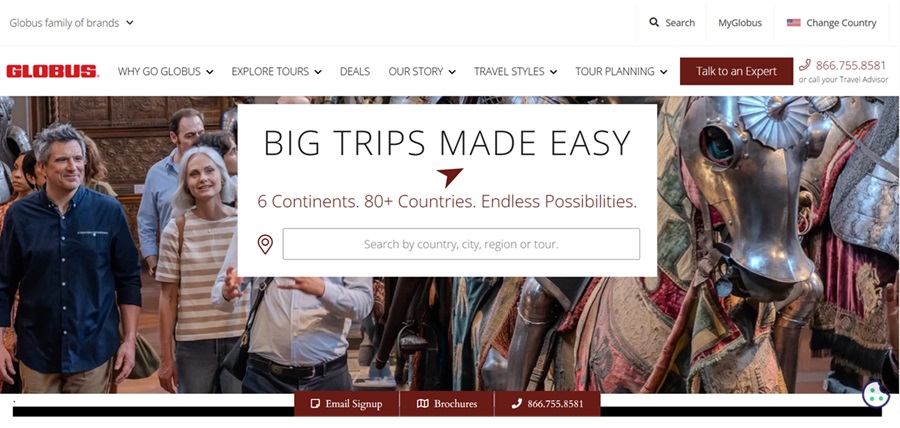
You’ve probably heard of proximity marketing, which simply means marketing to those in close proximity to your business. Close range marketing (CRM) is a branch of proximity marketing where companies typically use Bluetooth and other emerging technologies to better connect with customers. The idea is to get people to interact with your business when passing by or in the store. If you’ve ever downloaded the app for a retailer and received a push notification while walking or driving past the business, then you’ve experienced CRM. About 75 percent of the country’s top retailers have implemented some form of proximity technology or beacons near their storefronts. However, beacons are also used in places such as airports and sporting venues. Close range marketing benefits both the consumer and the retailer.
Benefits of Close Range Marketing
There are many benefits to CRM and very few drawbacks. The initial cost of implementation may be the only barrier and this cost varies depending upon the sophistication of any apps the brand creates and how intensive the push notifications are. Some of the advantages of CRM include:
- Engaging the user. People want an experience these days and if you set up your push notifications to interact with them as they approach your store, it creates an experience.
- Creating a personalized experience. Once the user installs an app, you can track purchasing and shopping behavior and then customize push notifications to that buyer’s interests, such as letting them know there is a flash sale on summer blouses today.
- Clearing out excess inventory. If you have too much of an item and need it to move, sending out push notifications about sales on that item to those near the store may result in more foot traffic and sales.
- Standing out from the competition. If your store is in a mall or otherwise crowded space, beacon marketing allows you to stand out from the competition. They may not yet have implemented proximity marketing into their repertoire. When you send out a ping to the user’s phone, you grab their attention away from the other stores in your area.
These are just a few of the advantages of proximity marketing. You’ll likely find others as you employ your own form of CRM for your business model.
How Does CRM Work?
For CRM to work, the user must download an application to their smartphone. This is your point of contact so you can hone in on the user when they approach your business and send them a note. While you can still send out push notifications even if the user isn’t close to your store, the most effective use of proximity marketing is when the user is on your doorstep and you send them an incentive to lead them through your front door. Close range marketing is also called hyper-local marketing because of the close range of users to the business. To implement your CRM system effectively, you’ll need a web developer who specializes in app creation. Decide what features you’d like your app to have. For example, you can offer coupons from time to time and the user might pull up the coupon from their app. The coupons are the incentive to download the app in the first place, but then you can provide push notifications to drive foot traffic. Keep in mind, though, that too many push notifications create irritation, so limit the number to only those things users are most likely to find interesting.
Who Uses Close Range Marketing?
Close range marketing is used by nearly any type of retail business you can imagine, and could potentially be used by wholesale businesses or those catering to other business owners (B2B). Some of the types of stores using beacon technology include:
- Gas stations
- Clothing stores
- Hospitals
- Airports
- Banks
- Hotels
- Restaurants
- Universities
- Public Transportation
As you can see, the technology is quite flexible. Nearly any business model benefits from adding hyper-local marketing to the mix.
Tips for Implementing Your Own Setup
If you’re convinced close range marketing is for you, you probably want to know what steps you should take to set up your own system. Although the process differs depending upon your specific business needs, here are a few steps to get you going.
Brainstorm the Offers
Spend time with your team brainstorming what you’d like to offer with your CRM. Start by thinking about what things you already market and how you can turn them into push notifications. Figure out what you’d like to gain from this marketing effort. Write out the benefits to your target audience if they download the associated app. How will it help them?
Hire a Developer
Invest in a developer who knows what they’re doing. The last thing you want to do is release an app that has a ton of bugs an aggravates your customers instead of attracting them. An app that doesn’t work correctly or crashes is very likely to get deleted by the user.
Test the System
Spend time testing out the app before releasing it to the general public. Have your employees download the app and use it. Fix any bugs you find. Those who are on the frontlines of your sales force are very likely to know what will and won’t help customers. Make sure you get their feedback and fix any issues they find.
Offer the App to Current Customers
Once you’ve worked out any kinks, offer the app to your loyal customers. They are much more likely to be forgiving as you work toward the best marketing model possible. Explain your goals to them, offer them a special discount for downloading the app and giving you feedback on their experience with it. After your regular customers use the app, you’ll likely need to make a few additional adjustments to perfect your system.
Promote the App With a Special Offer
Now, you’re ready to offer your app to your target audience who aren’t yet customers. Come up with a special offer that might entice them. For example, if you run a restaurant, you could offer a buy one entrée, get one free coupon if they download the app. Once they have the app installed on their phones, you have a direct connection anytime they near your place of business.
Make Adjustments As Needed
As your business grows, you’ll likely need to make adjustments to your setup. You may find that push notifications only work on certain days of the week or with a segment of your audience. The way you market to individuals adjusts over time, so pay attention to your internal data and which campaigns work best with your customers. Provide an easy way for customers to send feedback via the app so you can improve over time.
Up Close and Personal
Close range marketing is a very personalized approach to marketing. The notifications must be geared to the individual user and sent when that person is near the store. This type of hyper-location marketing can be quite effective when used correctly. The only way to figure out what works, though, is to use it with your customers and gauge the response.
CHAPTER 9: Neuromarketing CHAPTER 11: Guerrilla Marketing
[sc name=”small-business-marketing-table-of-contents”]




Leave a Comment